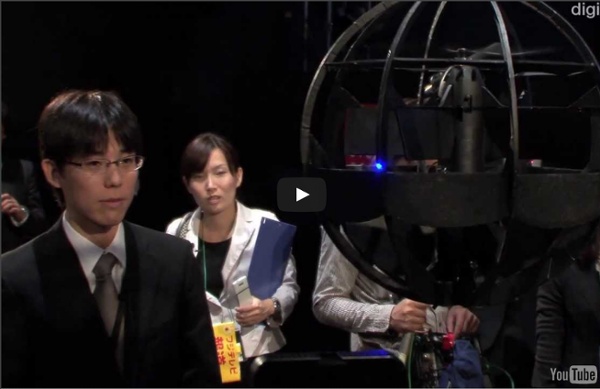Spherical Flying Machine Developed by Japan Ministry Of Defense #DigInfo

Le robot qui papillonne
Charmant, le vol des papillons… Mais quand on veut l’étudier de près, c’est à s’arracher les cheveux! Et pour cause : il n’est pas évident de commander à ces fragiles animaux de voler juste devant une caméra ultrarapide ! Mais cela pourrait changer. Hiroto Tanaka et Isao Shimoyama, deux ingénieurs des universités d’Harvard et de Tokyo, ont conçu un minuscule robot qui mime à la perfection le vol des papillons. Mathilde Fontez WordPress: J'aime chargement…
Des robots-insectes dans le ciel
Des robots-insectes dans le ciel Une observation insolite Vanessa Alarcon et des amis venus assister en septembre 2007 à un meeting anti-guerre à Washington ont observé de drôles d'insectes voler au dessus de l'assistance. "J'ai entendu quelqu'un dire, 'Oh mon dieu, regardez ça'", se rappelle la senior du collège de New York. A l'écart de la foule, Bernard Crane, un avocat de Washington les vit également. Avec ces observations insolites, l'idée que le gouvernement américain utilise des robots-insectes pour espionner les manifestants attise un peu plus la paranoïa parmi les adeptes de la conspiration. Visiblement, le public n'a pas été victime d'une allucination collective. Maintenant il faut essayer de déterminer s'il s'agissait de jouets téléguidés ou d'autre chose. Les robots-insectes et les gnats Nous savons également que la CIA fut l'une des premières agences à étudier le sujet dès les années 1970. Un danger potentiel pour le trafic aérien La technologie existe Paranoïa ou réalité ?
Related:
Related:



